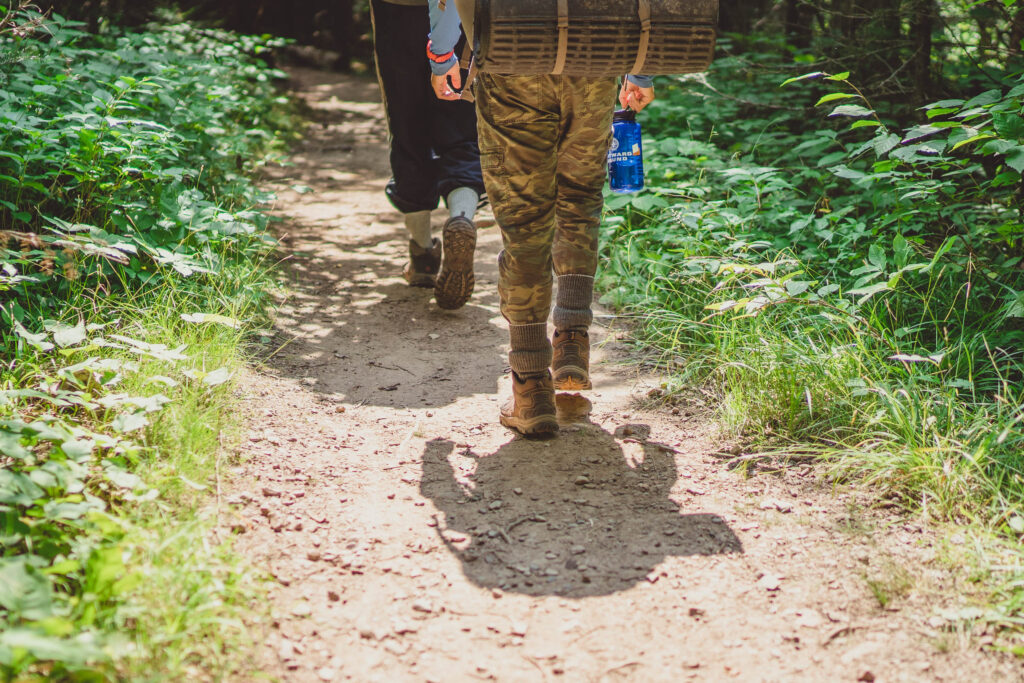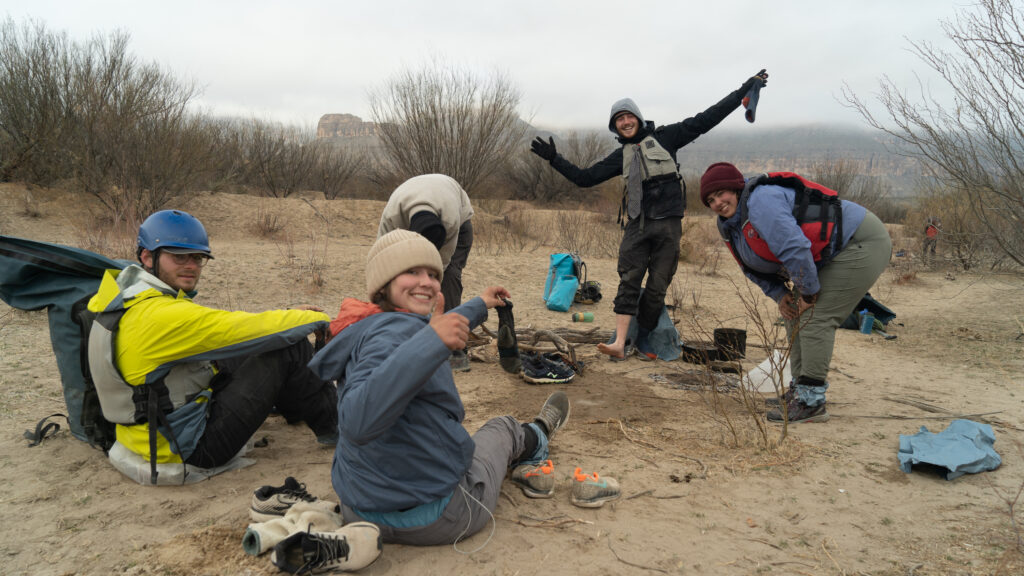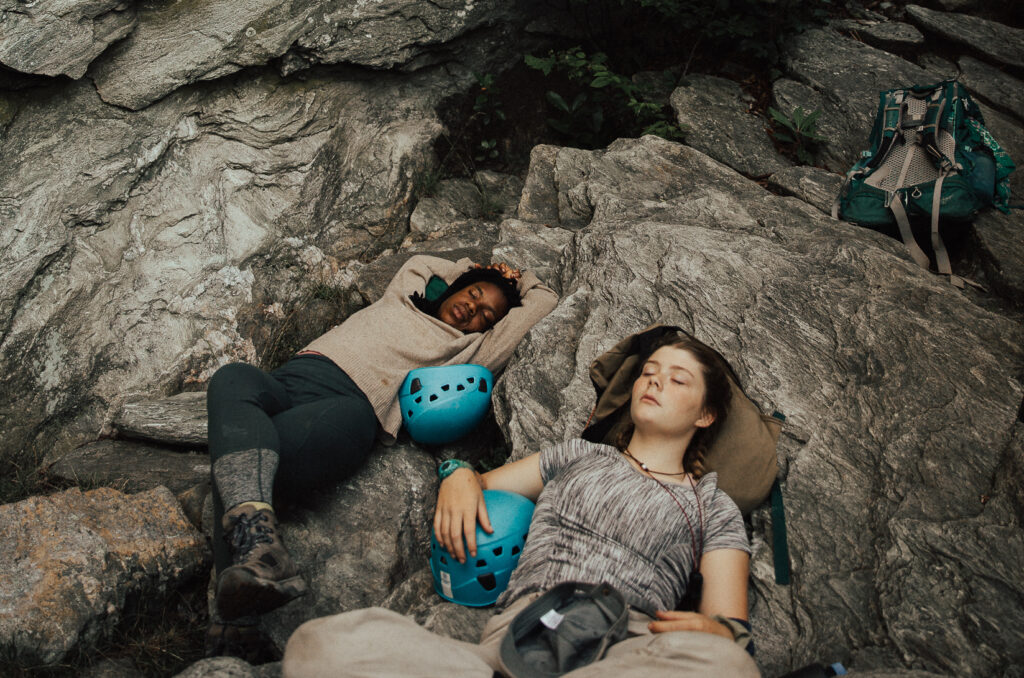Blisters can be the difference between having a good or bad time on your next outdoor adventure. Below are the steps to prevent and care for a blister in the backcountry.
I’m going to start this post with a little activity. Start by pressing your hands together flat and holding them out in front of you. Now, with your hands still pressed firmly, begin to quickly rub your hands back and forth for at least 10 seconds. What do you notice? Maybe you feel some heat or pressure? Or the contours of a recent cut or a long-lasting scar? Or, if your hands are dry like mine, you might feel some discomfort as the palms of your hands don’t slide so smoothly as they generate more and more heat.
The heat and pressure that you just created are two of the three primary ingredients that cause blisters when you’re out running, hiking or backpacking. Instead of on our hands, of course, it’s usually the rubbing between our socks and layers of skin on our heels, soles of our feet, or toes that causes the blisters that cause the agony many of us have experienced at one time or another. Keep reading for tips on how to stop blisters before they start and, if necessary, treat blisters once you have them.
Stop the Blister Before It Starts
Blisters are one of the most common injuries you may encounter in the outdoors. These little fluid-filled sacs our body creates to protect us range from a minor annoyance to the cause for medical evacuation if they get gnarly enough or infected. The good news? At Outward Bound we have tried and true methods for blister prevention. And the first and most important step begins before you even get out on the trail.

Photo by Jon Reynolds
Tip #1: Make Sure Your Boots/Shoes Fit Properly
One of the most common causes of blisters is ill-fitting shoes or boots. Think about it: if your shoes are too big then your feet slide around in your boots as you hike causing the friction we talked about earlier. So, make sure to try on a couple pairs of boots at the store before you buy them and find what works best for you.
Tip #2: Take the Time to Break in Your Footwear
Another important thing you can do before you go out on a trip with a new pair of boots is to break them in before you go. A few weeks before you head out, start wearing the boots around the house, go on short and then progressively longer walks in them, and if possible, go on a shorter weekend trip before embarking on a longer trip. You’ll definitely want to do this if you are signed up for an Outward Bound course this summer or fall.
Tip #3: Keep Your Feet Dry
In addition to pressure and heat, moisture is the third ingredient that leads to blister formation. Therefore, keeping your feet dry is another important step in blister prevention.
At Outward Bound, one thing we do is have everyone take their shoes off at lunch and do foot checks the first couple days of a backpacking trip. This not only allows students’ feet and socks to dry out midway through the day, but also allows them to get familiar with what their feet look and feel like, that way they know if there is something out of the ordinary that might require treatment. Bringing plenty of synthetic-blend socks is also a good way to keep your feet dry as they tend to dry more quickly than wool or cotton alternatives.

Students on a Semester course drying out their feet at camp. Photo by Mac Gaither
Treating Hotspots and Blisters
Tip #4: Treat Hotspots Before They Get Worse
A hotspot, sometimes called a pre-blister, is a “stop-and-fix” problem. That is, if you think you might have a hotspot, deal with it right away! How do you know if you have a hotspot? Well, taking a look at your feet before, during and after hiking each day is a good way to monitor. If you see any redness in a localized area or feel rubbing that is not normal for you, you probably have a hotspot. In my experience, the best way to treat a hotspot is by simply putting a piece of athletic tape over it and carefully bringing your sock back over the tape. Another tip to keep the athletic tape on tough spots, like heels, is to round off the corners of the tape with the scissors in your first aid kit so the tape isn’t as liable to get pulled off.
Okay, but I did all that and still got a blister, what do I do now?
Tip #5: Treating Blisters
The art of blister treatment is often case-by-case and depends on the location and severity of the blister. That said, here are some general guidelines for treating blisters in the backcountry.
- Grab some Molefoam, adhesive foam padding, from your first aid kit and cut a “donut hole” out of it whose inner diameter is the same size as the blister. Making sure the skin around the blister is dry, you can apply the foam padding directly to your skin. Adding a layer of athletic tape over the foam padding can help secure it.
- To drain or not to drain? Generally, the answer is do not pop the blister as you are essentially creating an open wound on your foot that could become infected. More often than not blisters will pop on their own or the body will reabsorb the excess fluid if treated properly. That said, if you do decide to drain the fluid from a blister, make sure to clean the area beforehand with soap and water and then use a sterile needle (alcohol works well) to pop it. Afterward, you’ll want to cover the blister with a bandaid to avoid infection.
- Finally, take a rest day. Stay off your feet and avoid further aggravating the blister, if possible. Blisters can go from bad to worse if you keep pushing through them without proper treatment and/or rest. Take an extra day at that alpine lake or next to the beautiful stream and let your body recuperate.

Photo by Rachel Veale
I hope this helps for whatever trips you have coming up, whether that is with Outward Bound or a trip with friends or family. Stay safe and blister-free out there!
About the Author
Dan Susman is an Instructor at the Colorado Outward Bound School who loves running long distances, climbing rocks and playing with other people’s dogs. While not instructing, Dan is the Dean of Experiential Learning at the Midland School outside of Santa Barbara, CA. His favorite thing to eat on an Outward Bound course is homemade pizza with wild foraged mushrooms. Dan received his bachelor’s degree from Dartmouth College and has a Master of Education from Harvard University.




